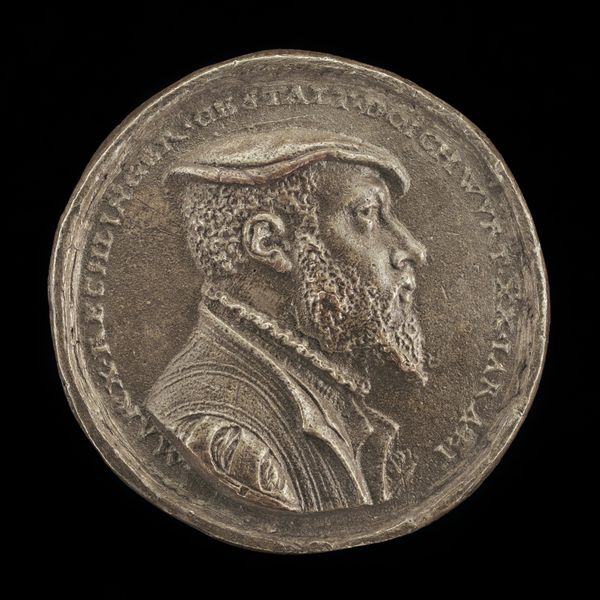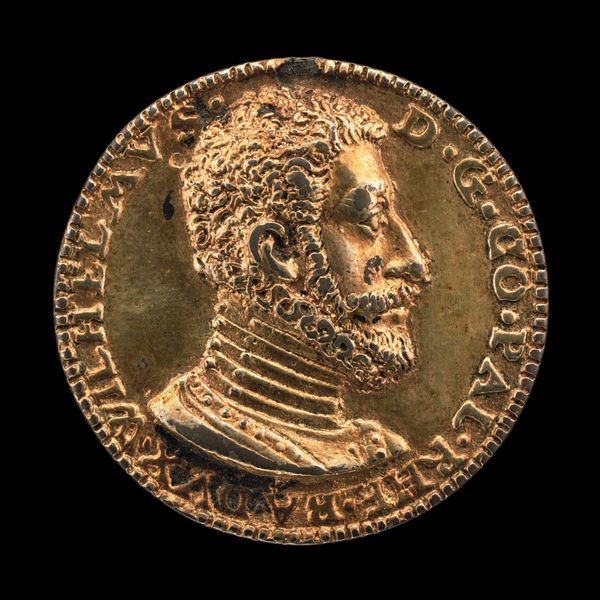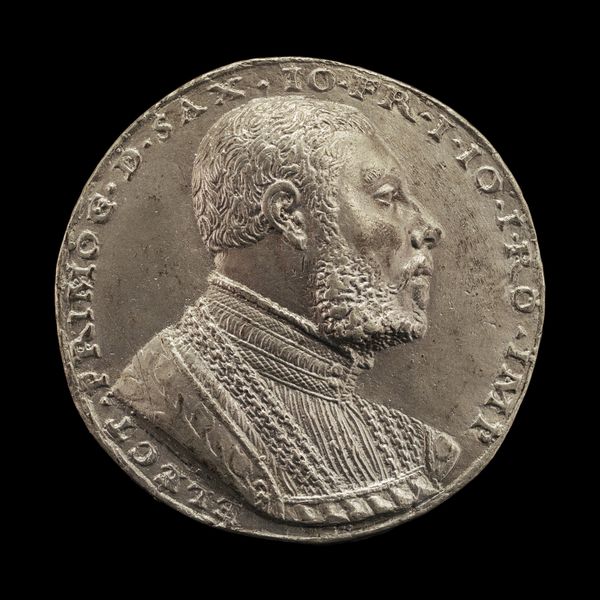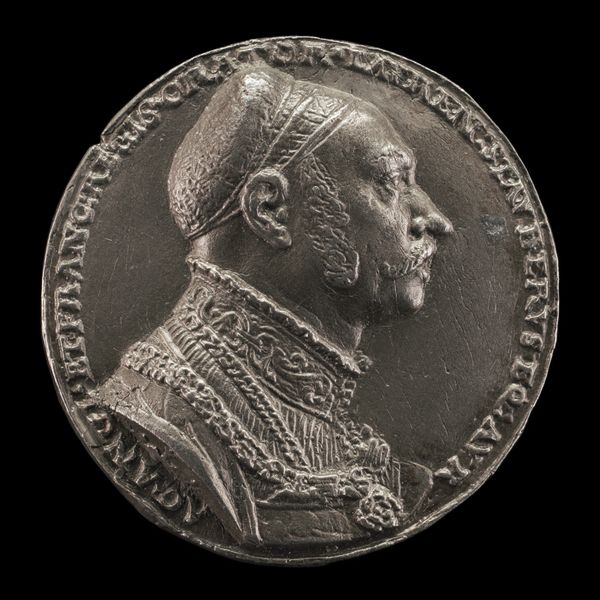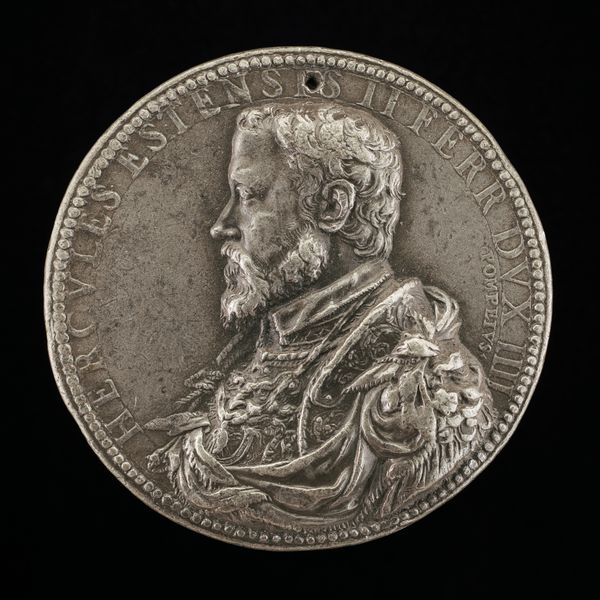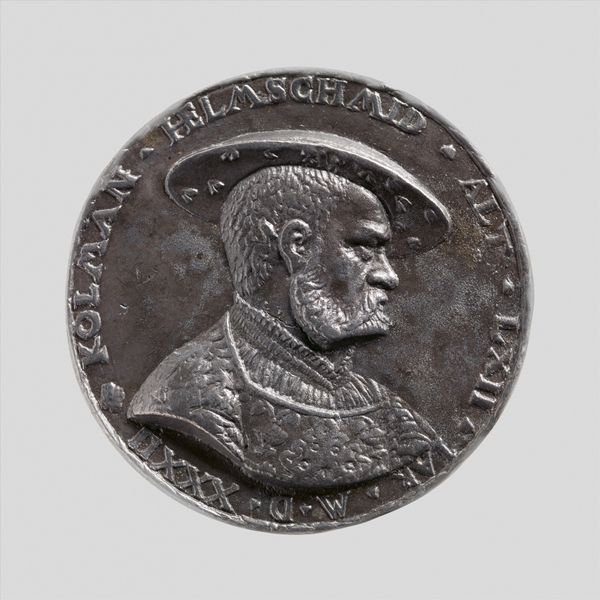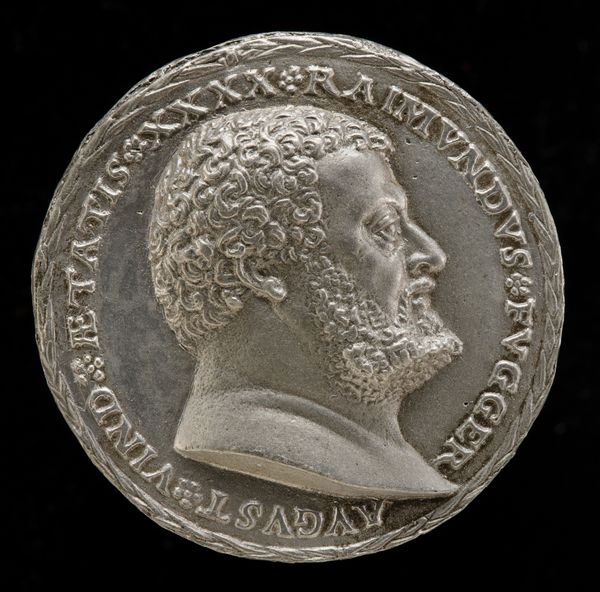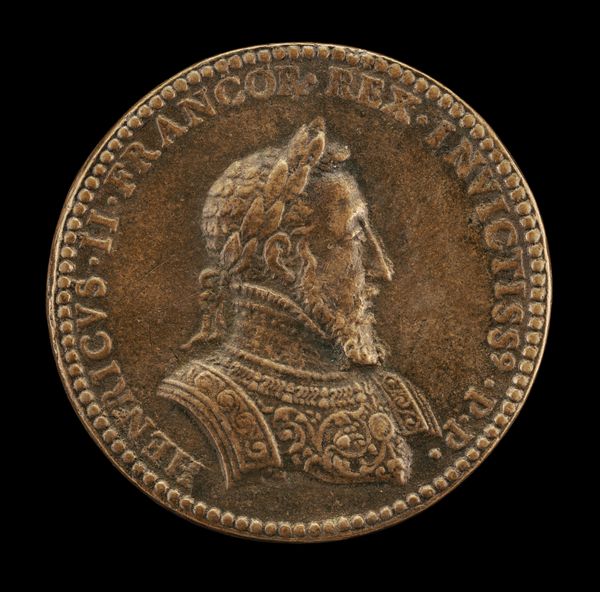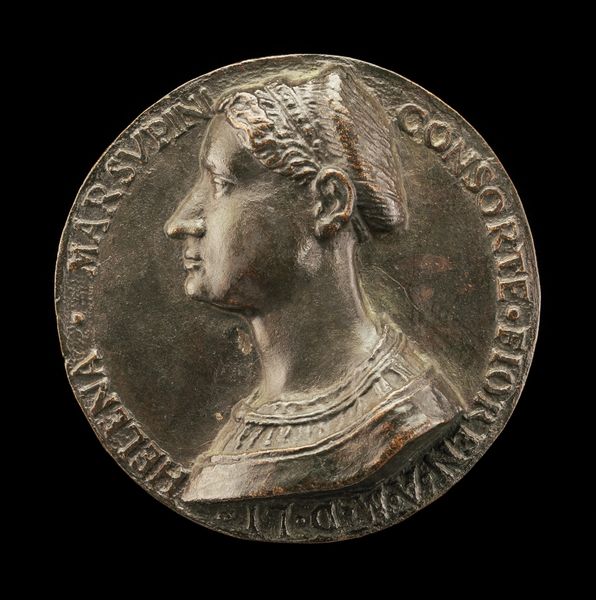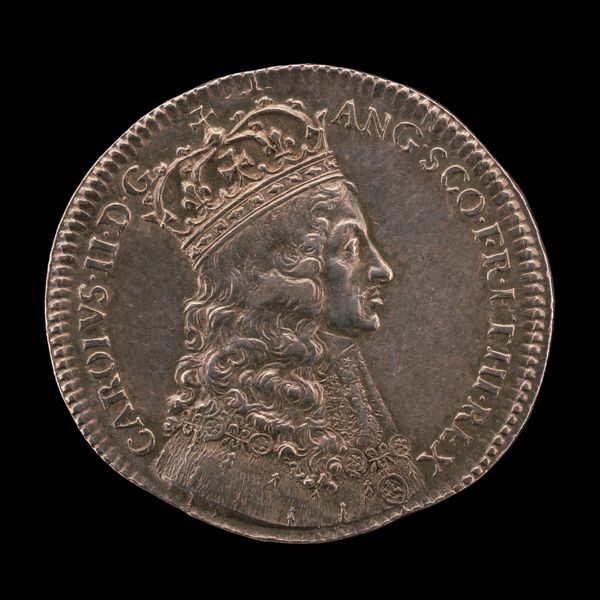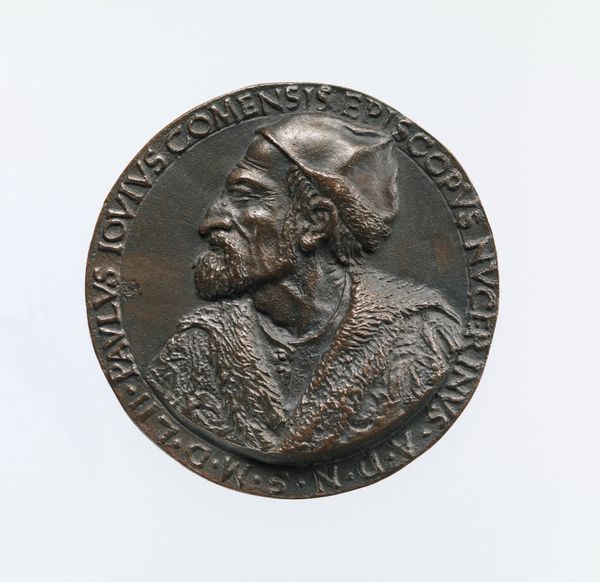![Georg Hermann, 1491-1552, German Philospher [obverse] by Matthes Gebel](/_next/image?url=https%3A%2F%2Fd2w8kbdekdi1gv.cloudfront.net%2FeyJidWNrZXQiOiAiYXJ0ZXJhLWltYWdlcy1idWNrZXQiLCAia2V5IjogImFydHdvcmtzL2EyZDM1OWNhLTQ0YjgtNDI1Ny05ZGZkLTUyYzU3ODUzNGU1MS9hMmQzNTljYS00NGI4LTQyNTctOWRmZC01MmM1Nzg1MzRlNTFfZnVsbC5qcGciLCAiZWRpdHMiOiB7InJlc2l6ZSI6IHsid2lkdGgiOiAxOTIwLCAiaGVpZ2h0IjogMTkyMCwgImZpdCI6ICJpbnNpZGUifX19&w=3840&q=75)
Dimensions: overall (diameter): 3.81 cm (1 1/2 in.) gross weight: 20.52 gr (0.045 lb.) axis: 6:00
Copyright: National Gallery of Art: CC0 1.0
Curator: Before us, we have a striking metal relief created by Matthes Gebel in 1529, titled "Georg Hermann, 1491-1552, German Philosopher". It is a portrait medal depicting the philosopher in profile. Editor: My immediate impression is one of severe elegance. The surface texture looks almost granular, which adds a weightiness to the philosopher's representation. What draws your eye in particular? Curator: I find myself contemplating the deliberate articulation of planes. Gebel utilizes line and contour meticulously. Observe the precise delineation of his headdress contrasted with the softness implied by the rendering of Georg Hermann's beard. Editor: Absolutely. It's also crucial to consider the materiality itself. This medal was produced during the Renaissance, a period marked by the resurgence of interest in classical antiquity and craftsmanship. Who exactly was producing the object? Was it individually commissioned and paid by the upper class? This brings to the foreground questions about the socio-economic implications inherent in the artistic production of the era. Curator: Indeed, and the inscriptions encircling the portrait serve not only to identify the sitter but to frame his likeness within a linguistic structure—drawing connections between name, identity and the form of the object itself. The lettering shows beautiful serif details that seem intentionally composed with respect to negative space. Editor: Considering its original context and methods of distribution provides us insight to the labor conditions and potential cultural impact of this metal work at the time. This artwork embodies a time when artisanal skill had tangible cultural capital. Do you believe that the context sheds light on Gebel's intentions, and how would this be read by contemporary society? Curator: It provides us with valuable contextual details. Ultimately the appeal to ideal form, geometric perfection, and structured composition reveal Gebel's skill in achieving what many believe embodies timeless artistic value. Editor: I'm left contemplating the artist's hand, the societal mechanics at play in the distribution of this metal, and how these works become time capsules of social dynamics through the Renaissance and to this very day.
Comments
No comments
Be the first to comment and join the conversation on the ultimate creative platform.
